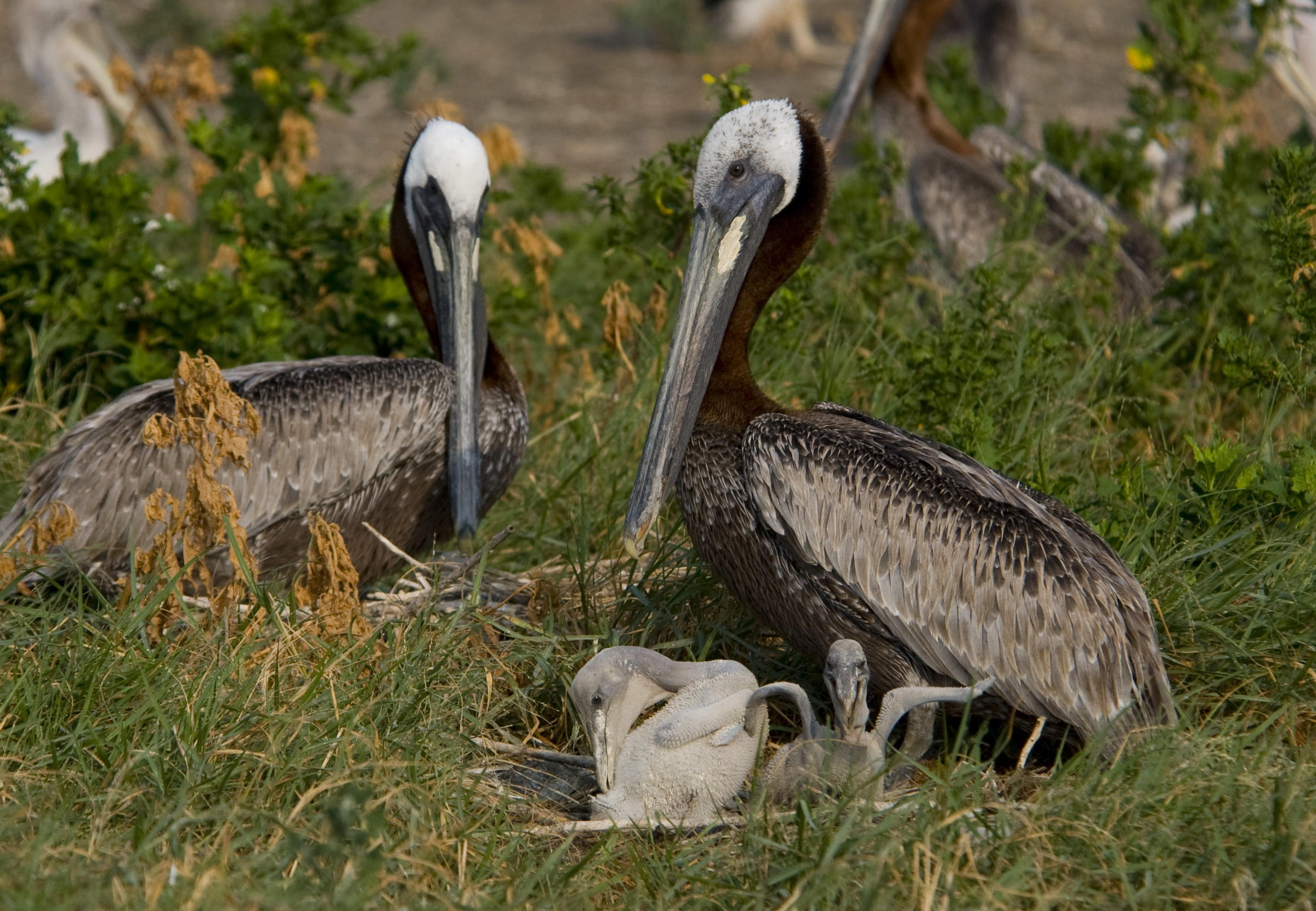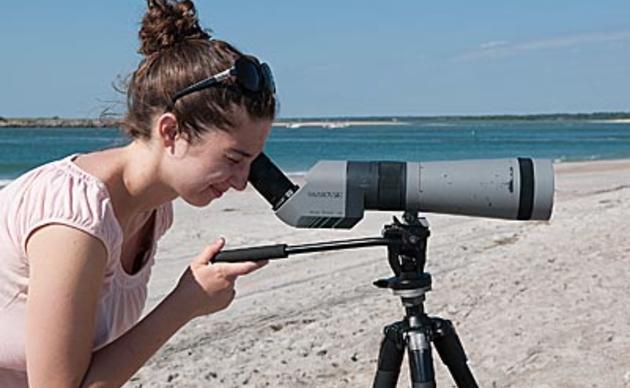The Brown Pelican is an unmistakable coastal bird, with its distinctive pouch, striking coloration, and enormous wingspan of over 6.5 feet. You’ll often see them gliding over waves at the beach or plunging headfirst into the water from heights of up to 60 feet. These spectacular dives are how Brown Pelicans capture their prey, which is schooling fish such as menhaden. There is a tale that pelicans go blind from the impact of diving, but there is no truth to that myth.
In North Carolina, Brown Pelicans are found in coastal marine and estuarine waters. Most migrate south for the winter, but small numbers remain year-round, though severe cold snaps result in frostbite to their webbed feet and pouches. They can be found nesting in the Cape Fear River, and in Pamlico and Bogue Sounds on small islands where they are relatively safe from disturbance and predation.
Pelicans were first recorded breeding in North Carolina in 1929 on Royal Shoal, one of the state’s first Audubon sanctuaries, and from those 14 pairs the population grew to more than 100 pairs nesting around Ocracoke Inlet on islands Audubon still protects today. The pesticide DDT compromised many species’ eggs, including Brown Pelicans’, decreasing populations throughout its range and landing them on the endangered species list. Following the ban of DDT in 1972, Brown Pelicans became a conservation success story, with North Carolina populations exceeding historic levels and expanding to islands in the Cape Fear River. Today 4,000-5,000 pairs nest in North Carolina.
Though DDT is no longer a threat, Brown Pelicans are still affected by human disturbance at nesting sites, as well as by oil spills, other contaminants and injuries from fishing gear. The North Carolina Wildlife Resources Commission and Audubon North Carolina monitor and protect Brown Pelicans nesting sites. About half of the state’s Brown Pelicans nest on Audubon’s islands.
Important Bird Areas (IBAs) designate areas that are critical to bird populations in North Carolina. The following IBAs are important to Brown Pelicans, either as nesting sites or foraging areas. Sites with an asterisk indicate an Audubon-managed site.
- Beacon Island*
- DOT Island
- Ferry Slip Island*
- New Dump Island
- North Pelican Island*
- Old House Channel, Island MN
- Onslow Bay
- Outer Banks, Inshore Ocean
- South Pelican Island*
Audubon North Carolina’s staff and volunteers are working to protect Brown Pelicans in North Carolina.
How you can help, right now
Donate to Audubon
Help secure the future for birds at risk from climate change, habitat loss and other threats. Your support will power our science, education, advocacy and on-the-ground conservation efforts.
Sign Up For Our eNewsletter
Keep up-to-date on all that happens with Audubon North Carolina's research, events and volunteer opportunities.





